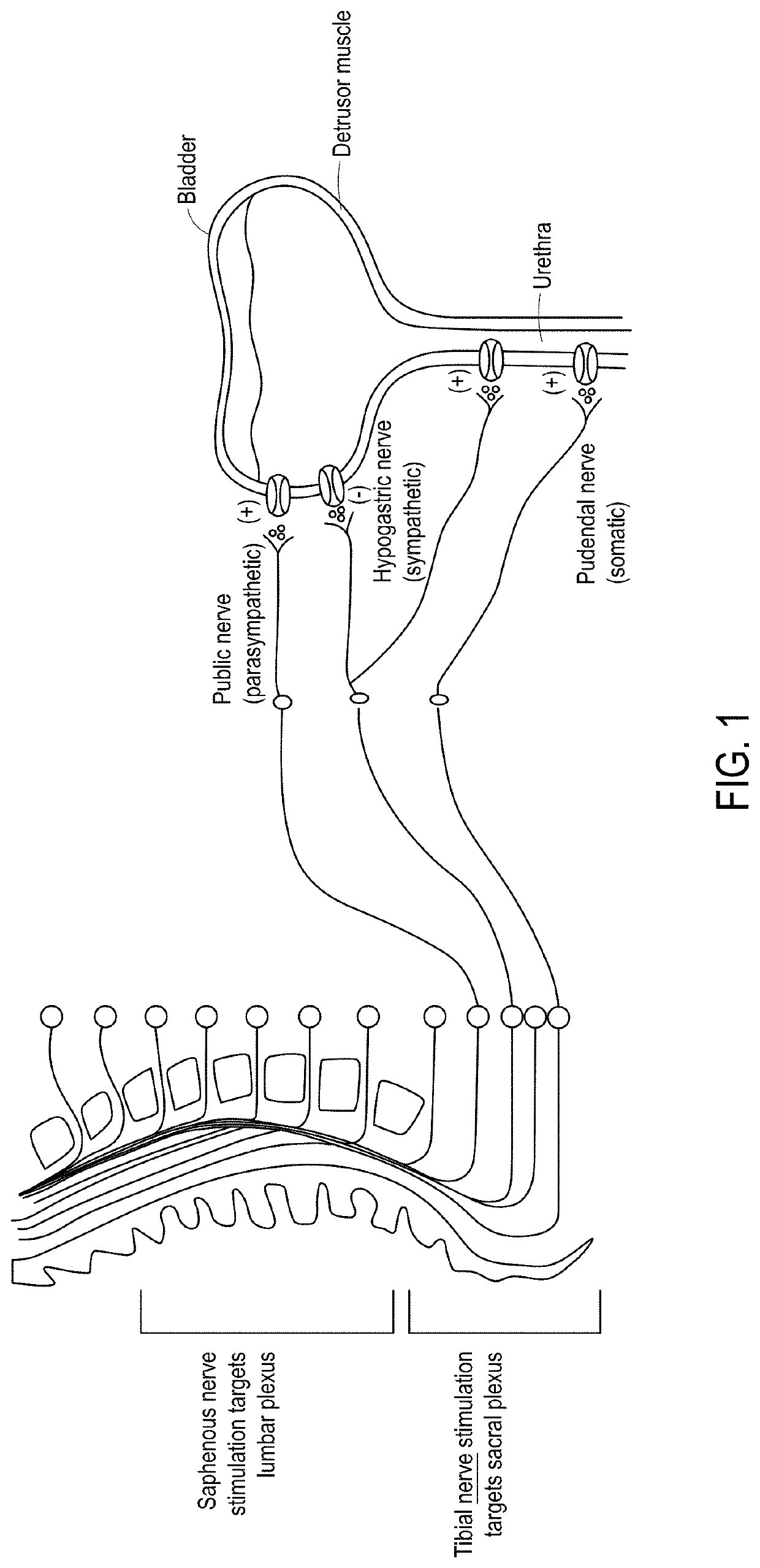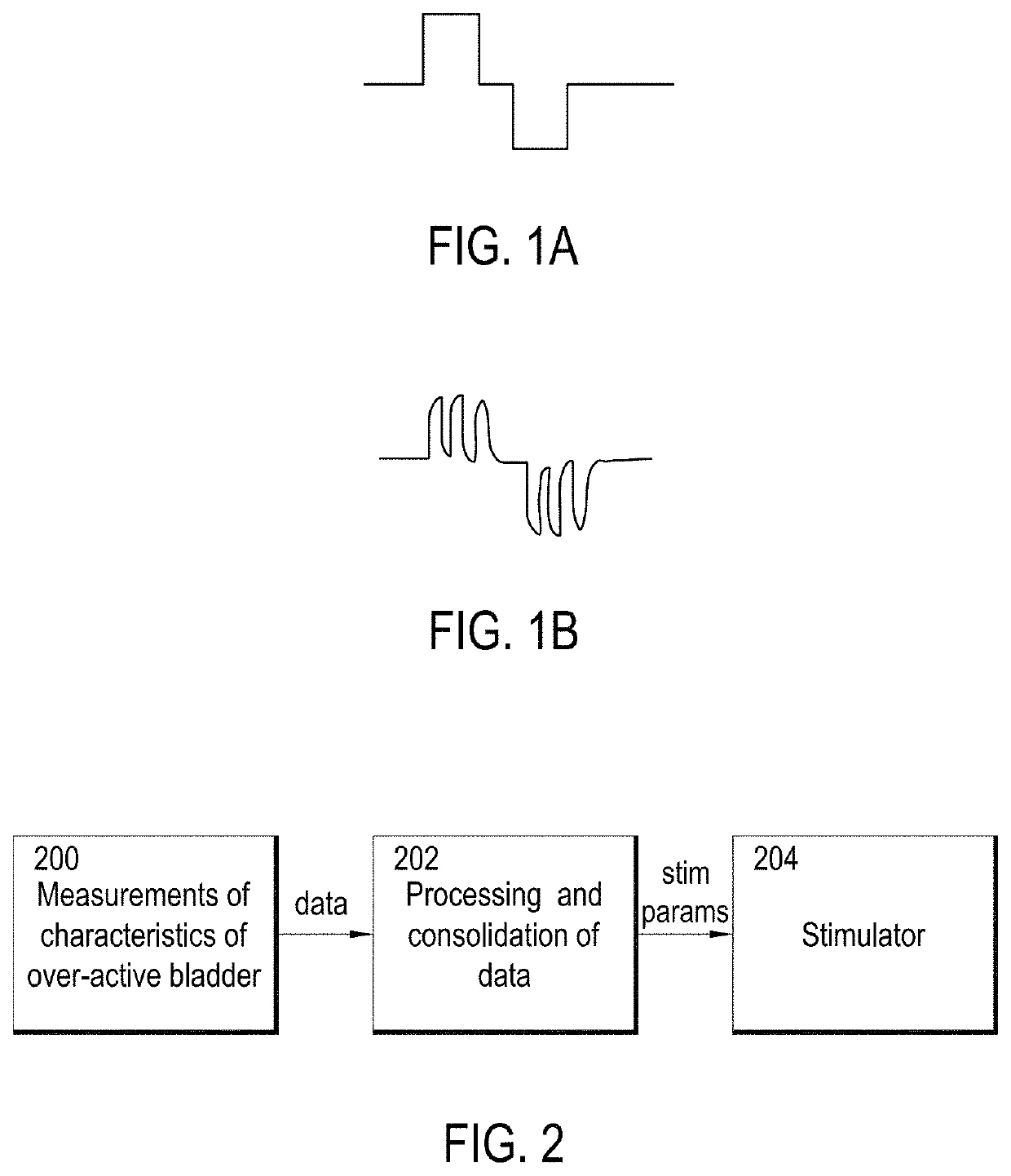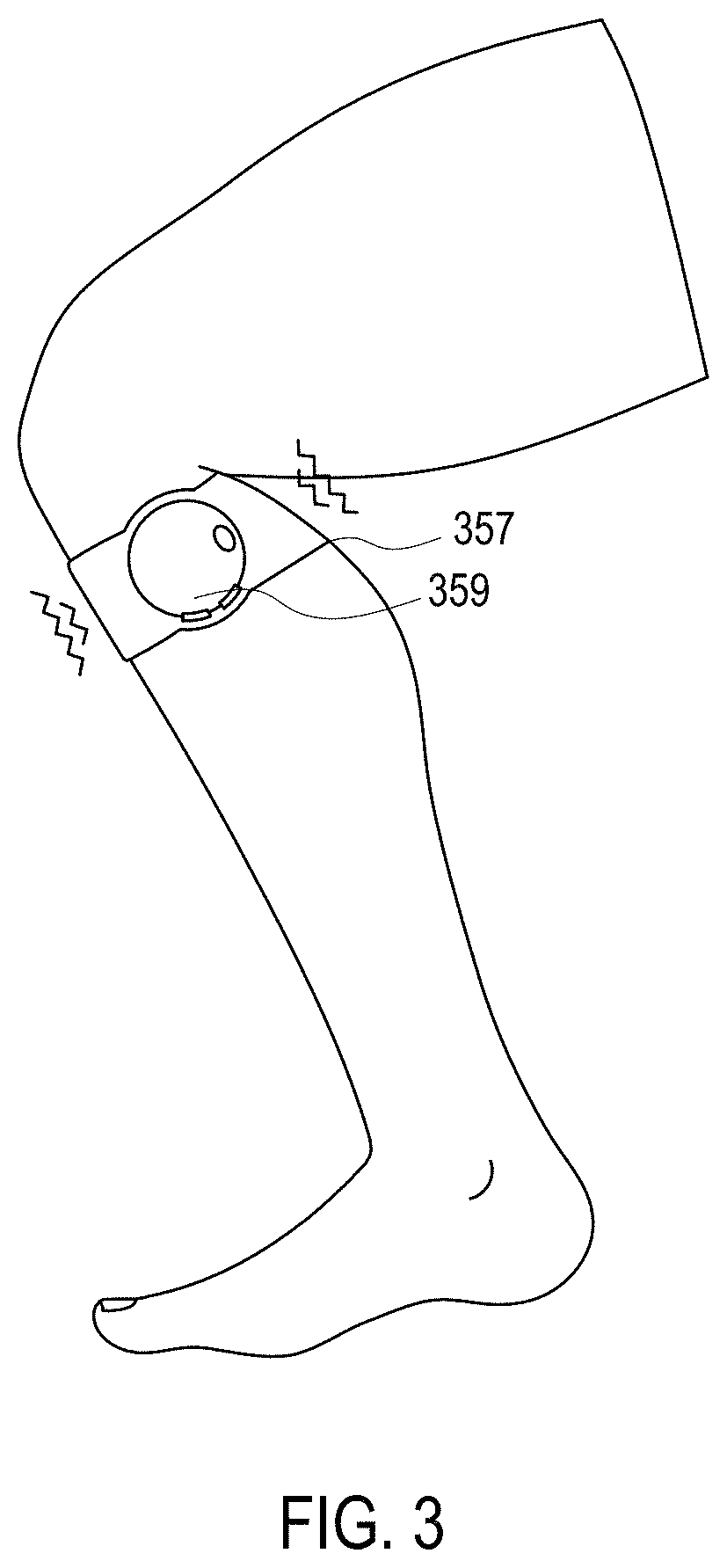Systems, methods and devices for peripheral neuromodulation for treating diseases related to overactive bladder
- Summary
- Abstract
- Description
- Claims
- Application Information
AI Technical Summary
Benefits of technology
Problems solved by technology
Method used
Image
Examples
Embodiment Construction
[0034]As used herein, the terms “stimulating” and “stimulator” generally refer to delivery of a signal, stimulus, or impulse to neural tissue of the targeted region. The effect of such stimulation on neuronal activity is termed “modulation;” however, for simplicity, the terms “stimulating” and “modulating,” and variants thereof, are sometimes used interchangeably herein. The effect of delivery of the signal to the neural tissue may be excitatory or inhibitory and may potentiate acute and / or long-term changes in neuronal activity. For example, the effect of “stimulating” or “modulating” a neural tissue may comprise one or more of the following effects: (a) depolarizing the neurons such that the neurons fire action potentials, (b) hyperpolarizing the neurons to inhibit action potentials, (c) depleting neurons ion stores to inhibit firing action potentials (d) altering with proprioceptive input, (e) influencing muscle contractions, (f) affecting changes in neurotransmitter release or u...
PUM
 Login to view more
Login to view more Abstract
Description
Claims
Application Information
 Login to view more
Login to view more - R&D Engineer
- R&D Manager
- IP Professional
- Industry Leading Data Capabilities
- Powerful AI technology
- Patent DNA Extraction
Browse by: Latest US Patents, China's latest patents, Technical Efficacy Thesaurus, Application Domain, Technology Topic.
© 2024 PatSnap. All rights reserved.Legal|Privacy policy|Modern Slavery Act Transparency Statement|Sitemap



